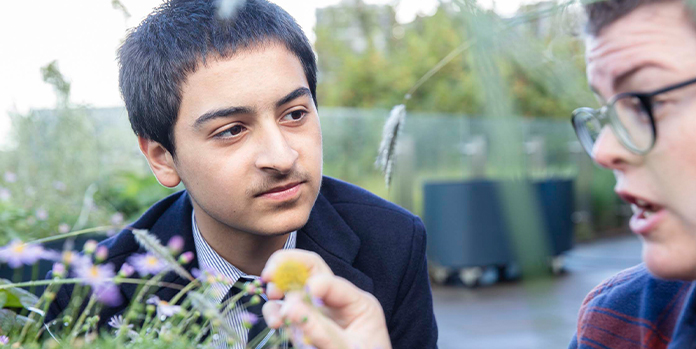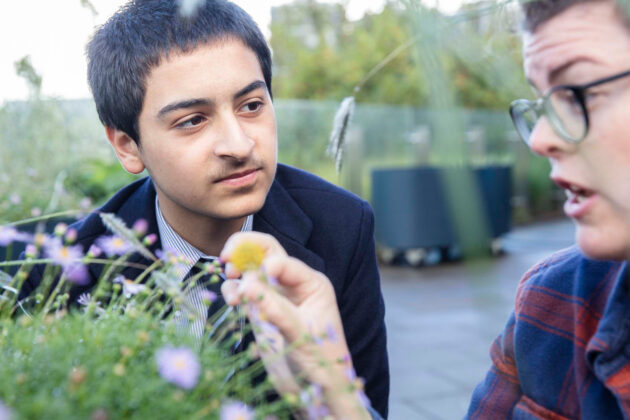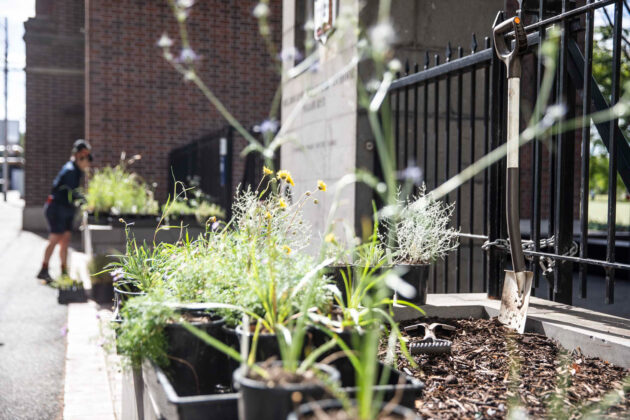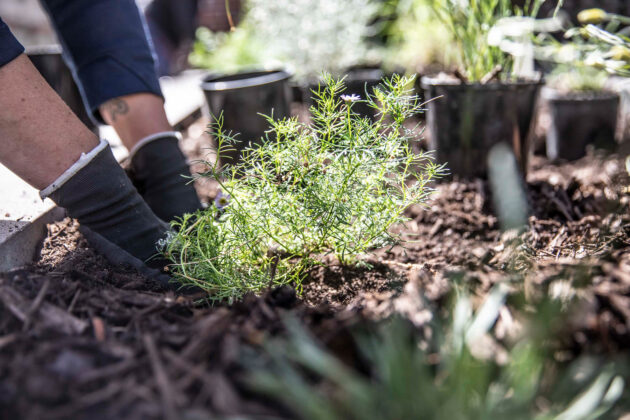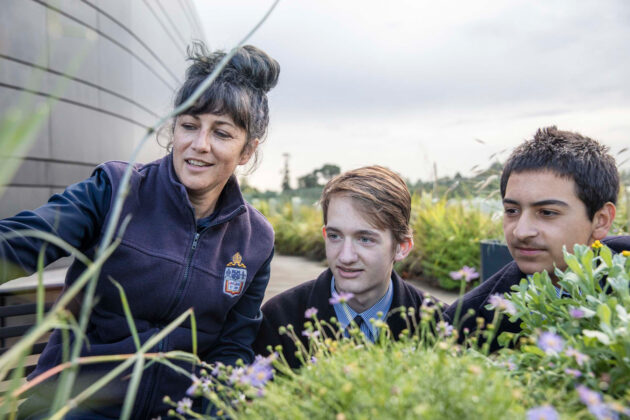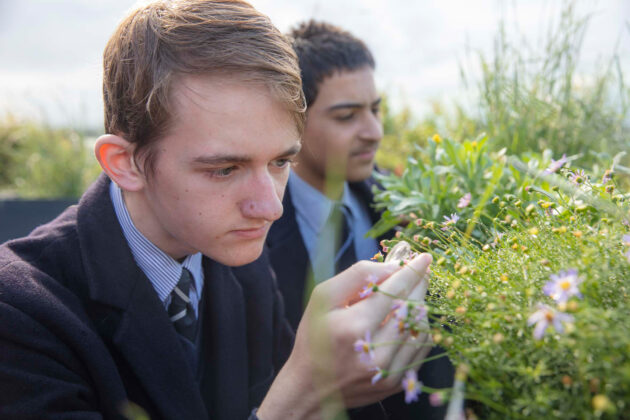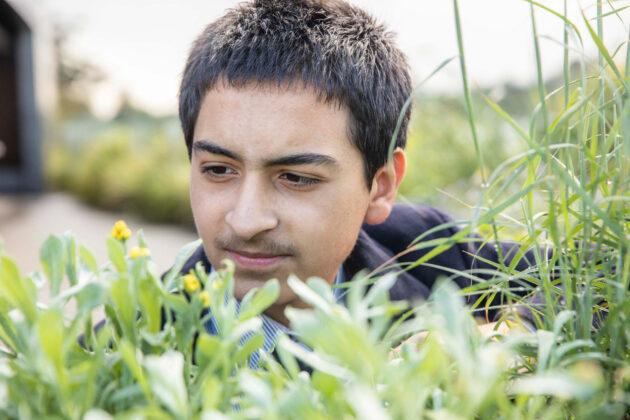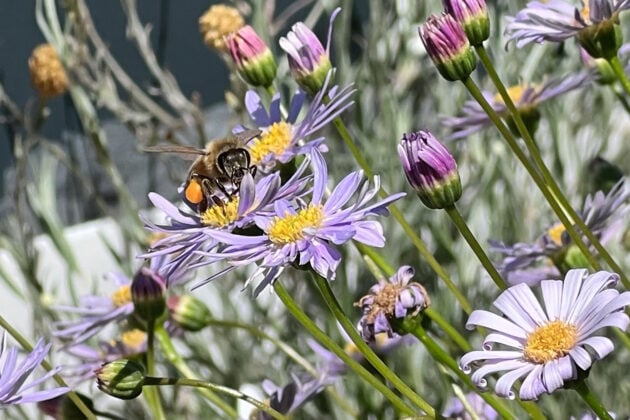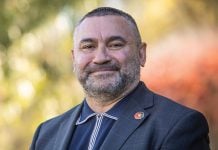This article was written by Haidar Bashir, Year 11.
Melbourne Grammar School is making a real difference to local flora and fauna through our involvement in the Melbourne Pollinator Corridor (MPC) Project.
An Australian first, the MPC will be an 8km community-driven urban wildlife corridor which links the two large green patches that run along the Yarra River -Westgate Park in Port Melbourne and the Royal Botanic Gardens of Victoria.
“There are species that have moved to the outskirts of the city and are at risk of disappearing. The design of the MPC involved working with many specialists and scientists so that we can have the best chance of success in bringing them back,” states Emma Cutting, leader of MPC. To make this possible, Emma explains that the first step is to create 200 garden beds, no more than 50m apart, collectively filled with at least 18,000 indigenous plants using barren, under-utilised pieces of mainly public land between the two end points. Replanting lawned areas such as nature strips with indigenous plants will be a large part of the MPC.
The implementation of these garden beds within close vicinity of one another enables pollinators to travel shorter distances and pollinate more plants in a shorter amount of time.
“There are many people supporting the MPC and we are aiming for the 200 gardens to be created by end 2024,” adds Emma.
The involvement of the community helps another aspect of what Emma is trying to institute, and that is the connection of humans to nature.
Indigenous planting across campuses
Melbourne Grammar’s involvement in the project stems from our unique location within the Corridor, with the South Yarra campus near the Royal Botanic Gardens and Edwin Flack Park at the other end, near Westgate Park.
“We have been creating new garden beds out of lawned areas at Flack Park for a number of years. We are now looking to create more garden beds within the campus,” says Melbourne Grammar’s Horticulturalist, Natalie Simmons. “At our South Yarra campus, we have already planted new beds at Wadhurst and on the rooftop of the Geoff Handbury Science and Technology Centre, with more to come, and we are using locally sourced indigenous plants and seeds to do this.”
Building scientific knowledge
The MPC also includes a Citizen Science component which again uses the involvement of the community. It aims to complement the work being undertaken by professional scientists to gather valuable information about exactly how the MPC is positively affecting the indigenous flora and fauna in Melbourne. This will be used to inform future initiatives.
“It gets community members of different ages involved and gives them a different angle of connection,” Emma states.
Melbourne Grammar School students are also playing a key role in this aspect of the Project.
During Term I, the Year 11 Environmental Science class conducted practical investigations in attempts to come up with answers to research questions they devised. Some of the questions included ‘How does temperature affect pollinator activity?’ and ‘How does altitude effect plant pollination?’.
From Term II, the School aims to involve students of other year levels who are eager to be involved in such an important project by taking weekly measurements at the garden beds on the South Yarra campus.
These measurements would include the quantity of pollinators as well as environmental factors that affect their movement and pollination of plants. Frequent patterns that arise in the measurements can then be sent to the botanists and ecologists who are working with the MPC.
Through the variety of community driven aspects of the project, the Melbourne Pollinator Corridor is a step in the right direction towards improving biodiversity and bringing to light a feature of Melbourne’s natural world that is currently under threat by factors including infrastructural development and abolition of flora and fauna habitat.
Its vision to help reinstate a more natural environment through the help of voluntary members of the community, including Melbourne Grammar, has really displayed just how important and focal this is to the development of wildlife across Melbourne.
Pollinators and plants
There are thousands of different species of pollinators which are native to Australia. This includes almost 1650 recorded species of native bees and perhaps hundreds waiting to be discovered. (Note that the honeybee, while much loved and important, is not native.)
While bees are amongst the most abundant and well-known pollinators, they are not the only pollinators in our local environment. Other pollinators include wasps, moths, dragonflies, beetles, butterflies and some species of birds, bats and possums.
The wide range of species allows for pollination of a more diverse variety of plants.
